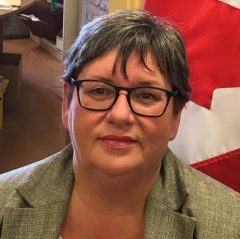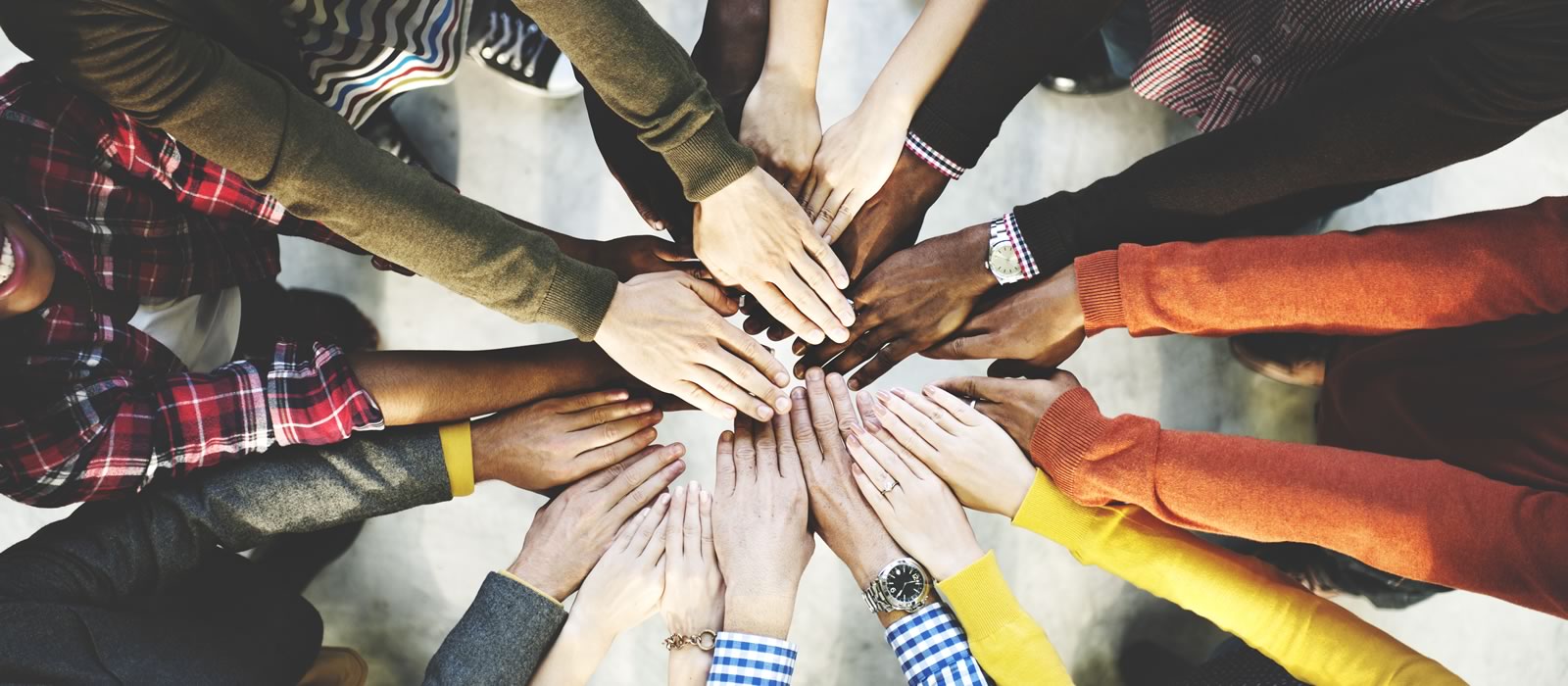In CFICE’s “Conversations With” series, we interview community-campus engagement (CCE) practitioners to get their insights on CCE. Interview conducted by Kristina Reed, CFICE Communications Research Assistant.
 Bonnie Brayton has been the National Executive Director of the DisAbled Women’s Network of Canada (DAWN) since 2007 when she established a national head office in Montreal. This national, cross-disability feminist organization has focused on advancing the rights of women with disabilities and deaf women in Canada and Internationally for the past 30 years. In this piece, Bonnie shares her thoughts on the intersections of Disability, violence against women, and community-campus engagement.
Bonnie Brayton has been the National Executive Director of the DisAbled Women’s Network of Canada (DAWN) since 2007 when she established a national head office in Montreal. This national, cross-disability feminist organization has focused on advancing the rights of women with disabilities and deaf women in Canada and Internationally for the past 30 years. In this piece, Bonnie shares her thoughts on the intersections of Disability, violence against women, and community-campus engagement.
Tell me about what Dawn Canada does and your involvement with them.
DAWN Canada is a feminist disability organization founded in 1985, so we’ve been around for 33 years. We’re, as far as I know, one of the first national women with disability organizations.
In 2007, I became DAWN’s first national executive director…So that’s when we really established a national head office inside this feminist collective in Quebec as a very important gesture towards really trying to become the most inclusive women’s organization we could be… The decision to make the head office in Quebec was a really good one, because it’s actually made us probably one of the most bilingual national women’s organizations in the country…
We’ve actually been located really strongly as one of the national women’s organizations that the current government really is working with in a very meaningful way. It’s taken a while but like I said, it’s begun to bear fruit. For example, I sit on Minister Monsef’s advising council on violence and I’ve been on that council for three years. And I can see the results of being at the table…
So what are the connections between disability and violence against women?
So, I’ll start with something that I’ve been saying for years which is that women become disabled through violence. And really pause to think about what I’m saying, right? “Women become disabled through violence,” and what the implications of that are.
Because the policy implications are huge, so people don’t want to hear that. They don’t want to hear that women become disabled through violence, but that’s the truth! If you look at even trafficking, every person who’s trafficked, ever, whether they start with a disability or not, will end with a disability. You know, I have a briefing note I can send you on human trafficking and disability and we’re the only people in the country, and almost the only people in the world talking about this issue…
Did you see the new disability data survey results from 2017? 24% of women in Canada have a disability. One quarter. Because we’re doing better data collection, we’re asking the right questions. One quarter. And you and I both know there’s a stigma attached to disability. Many women are still not disclosing to a statistical survey if they have a disability. They’re not saying “yes” to that question. But the newest data has it at 24% so one quarter of women in this country said “yes” this time when they were asked.
So, the World Health Organization, Kristina, okay? The largest minority group in the world today are people with disabilities at a billion. And the majority of those are women. In Canada, the new data shows there’s a five-point difference between men and women.
So, what that tells you is that disability is a gendered issue. It is absolutely a gendered issue.
What is DAWN doing to help women with disabilities escape violence?
It’s pretty clear to DAWN, deep into the research now, that some women are harder to accommodate [by shelters] than others because they’re not identified as having a disability. The question of access for women with physical disabilities to shelters is a frustrating one, and a really simple one to fix because all you have to do is look at labour.
And you know it is not necessarily disabilities that might be her first barrier. It might be that she is an immigrant, or a refugee, or she’s indigenous. These kinds of things, like I said, you know, need to be taken in terms of the big picture. And the big picture one is: you start from the most marginalized women and then you work your way in, and then you don’t leave anyone out.
So, I guess what I’m trying to say, Kristina, is that [accommodating] physical disabilities needs to be thought through as something that can be done and is very fixable. The other big piece though, we need to move beyond [the fact that] women with physical disabilities are not being served and are being victimized at higher rates. We need this whole cohort of women who are actually becoming disabled, become part of this larger problem we have: which is this whole displacement of women who experience violence. Where do they end up after they leave the shelter or transition house? I’m telling you: some of them end up in human trafficking, some of them end up in the homeless population, and some of them end up in prison.

Varvara Olson and Maren Mentor, International Visitor Liaisons with members of the Canadian delegation of Healing the Wounds of Trafficking: A Project for Canada hosted by the U.S. State Department – Anthony Morissette, Peter Moriera, Bonnie Brayton and Larissa Maxwell. (Missing: Isabelle Nelis) © Bonnie Brayton
What do you think needs to be done to create change for women with disabilities?
It’s going to change in time, you know? This data, the 24% of women with disabilities in Canada is the biggest statistic I’ve ever had, Kristina, and this just came out two weeks ago. That’s going to have a huge impact on policy…
This requires people, politicians, policy makers to take up what is now irrefutable data. Which is that you have this very important population that has the highest rates of poverty, the highest rates of unemployment, the rightest rates of violence, and we’ve left them in this policy vacuum…
Some of what DAWN really is very focused on, is the intersectional approach because it’s through this intersectional approach that you begin to get everybody to understand it’s not an “us and them” thing… Amongst all women in Canada, the one thing that all of them could have in common… the one thing in common that all women can share is disability.
I will say this, and this is an important point to make … 47% of all violent victimization, (so violent victimization is physical assault, sexual assault, and robbery), 47% of all violent victimization in Canada was against a woman with a disability. So nearly half. That’s the best data we have.
And I just told you 24% of women in this country live with a disability… [A] shift has started to take place though, and that’s why the new buzzword everywhere is intersectionality. And it’s moving beyond buzz, to people being like: “this is not a buzzword, this is the only way we’re going to fix this stuff”.
I’m curious as to the CCE approach that DAWN has taken. Because I know that you have worked with a lot of community-based researchers and academic partners. What have those experiences been like and how has the CCE approach helped when looking at violence against women?
Well, I think I told you before, the community and community research is what should inform campus research, to be really clear. You cannot do good academic research unless you connect it to people who have lived experience…
[Community-campus partnerships] that have worked for DAWN have been ones that have respected our expertise…You’re not going to get me to trust you if you think that you’re bigger and more important than I am, and that’s because I know that I represent the most underserved population. I am very clear on the fact that I am the one that holds the power, because I represent this community that you don’t serve… Humble yourselves, humble yourselves and figure out how you support that. And that is exactly how you do this right…
What advice you would have for other community-campus partnerships that want to include that disability lens in their work?
Well the first advice, is you’d bloody well include a disability lens, because if you don’t, you’re not credible.
If you want to be helpful the first thing to do is align yourself with organizations that are working from that place, so disability organizations, organizations that talk about social justice, or socio-economic justice…So, the first thing you might need to do is say “well, we can call and work with you, but the first thing we need to do is get the table set up, so let’s set the table.” …so set the table, and then bring people to the table. And pay them to come to the table…And like I said: there is no not including. That’s the most important thing…
Further to this, how we can keep those lived experiences at the forefront?
And how do you do that? … Like think about it: imagine how powerful it is for women with disabilities who have had the lived experience of violence to have somebody in front of them whose biggest concern is about getting it right, and reflecting what it is you want us to tell, what needs to change. And you know, it’s very much about trust and the ability to empower somebody by saying: “this is for you.”
Kristina: There needs to be a concerted effort to distinguish between, like you were saying, equity before equality…
Bonnie: And like I said Kristina, if you’re doing research that you can’t give back to the people that it’s about, then you’re not doing good research. If it doesn’t provide women with disabilities with something, then you don’t get it right. I guess I’d say, follow Samuel Beckett’s advice: [“Ever tried, ever failed. No matter. Fail again. Fail better.”]
If you get it wrong, then you just go back to the people who can get it right, and the people who can get it right are the people you’re doing this for. You know? You’re not doing it for yourself and your academic career, you’re doing it because it’s important. And stay grounded in that.
To learn more about DAWN Canada, visit their website here.


